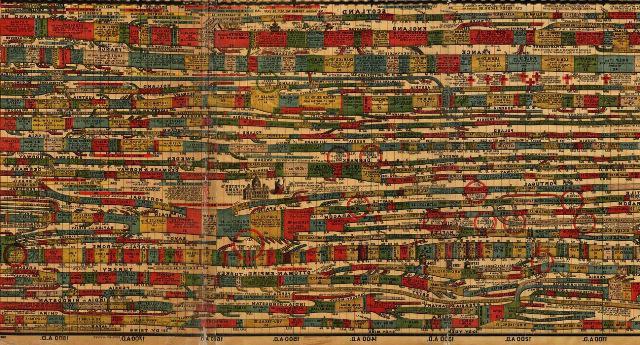Hello look at this
1. Historical chronology.
Turning to the study of the past, it is easy to notice that we are always interested in when this or that person lived. historical figure when the city was founded or when the war began and ended. Without dates there is no history.
Historians construct the past historical events in a certain sequence in time. This sequence forms a chronology. The word “chronology” itself translated from ancient Greek language means "science of time". Ten years form a decade. A hundred years add up to a century, or a century. A thousand years makes a thousand years. All of these time period designations are used in historical chronology.
Counting time is not just for historians. IN Everyday life we count days, weeks, months, years according to the calendar.
2. Calendar.
The name "calendar" comes from the Latin word "calendarium", meaning "debt book". The fact is that in Ancient Rome, debtors were required to pay interest on debts on the first day of the month - the calendar. They began to keep a calendar so as not to get entangled in debt. A calendar is a system for counting large periods of time.
Primitive people did not know the calendar. They celebrated the change of day and night, the alternation of seasons. The creation of the first calendars was also associated with the emergence of the first states. At first, counting was carried out by lunar months, since changes in the lunar disk were easy to see and correlate with certain periods of time. The first solar calendar was invented in Ancient Egypt. And the most accurate calendar was created by the ancient Mayan people in Central America.
Each ancient civilization there was a counting of years; all nations counted time differently. Scientists had to work a lot to be able to date the events ancient history according to our usual calendar.
The modern calendar is based on the solar year. Solar year- this is the duration of one revolution of the planet Earth around the Sun. It is 365 days plus approximately 1 hour. When compiling a calendar, it is impossible to accurately take into account this small additional particle of “about 1 hour”. Because of this, even the modern calendar accumulates slight inaccuracy in measuring time over the centuries. It is no coincidence that they are now proposing to introduce a new, more accurate world calendar.
3. Our era.
Of particular importance for the calendar is the event from which time is counted. Main point The countdown according to our modern calendar is the year of the Nativity of Christ. This chronology is called Christian or AD. Sometimes it is also called new era. Our era is usually abbreviated as AD. e. Thus, we live in our era and count the years of our era.
The first year of our era is considered the conventional year of the birth of Jesus Christ. Our modern calendar is dated from this first year. Everything that happened before the first year belongs to the time before the Common Era (abbreviated BC).
4. Timeline.
Look at the timeline in the picture. The vertical line marks the beginning of our era. On the right is our era. Here the years are calculated sequentially forward, one after another - first, second, third, and so on until the current year.
On the left side of the dividing line - BC - we look back, as if in the opposite direction. The closest year to the turn of our era will be 1 BC. e. Note that there is no year zero. If we want to count the years in the 1st century BC. e., then the closer to the end of the century, the smaller the number of the year will be. That is, 1st century BC. e. began in 100 BC. e., and ended in 1 BC. e.
For example, the ruler Ancient Rome Gaius Julius Caesar was killed in 44 BC. e. Let's mark this event on the timeline. Next year will be 43 BC. e., followed by 42 BC. e. and so on. Most of The history of the ancient world developed BC. e.
>>History: Counting the years in history
2. Counting years in history
1. Historical chronology.
Turning to Study of the past, it is easy to see that we are always interested in when this or that historical figure lived, when a city was founded, or when a war began and ended. Without dates there is no history.
Historians build the past, historical events in a certain sequence in time. This sequence forms a chronology. The word “chronology” itself translated from ancient Greek means “the science of time.” Ten years form a decade. A hundred years add up to a century, or a century. A thousand years makes a thousand years. All of these time period designations are used in historical chronology.
Counting time is not just for historians. In everyday life, we count days, weeks, months, years according to the calendar.
2. Calendar.
Name " calendar" comes from the Latin word "calendarium", meaning "debt book". The fact is that in Ancient Rome Debtors were required to pay interest on debts on the first day of the month - Kalends. They began to keep a calendar so as not to get entangled in debt. A calendar is a system for counting large periods of time.
Primitive people did not know the calendar. They celebrated the change of day and night, the alternation of seasons. The creation of the first calendars was also associated with the emergence of the first states. At first, counting was carried out by lunar months, since changes in the lunar disk were easy to see and correlate with certain periods of time. The first solar calendar was invented in Ancient Egypt. And the most accurate calendar was created by the ancient Mayan people in Central America.
Each ancient civilization had its own count of years, all peoples They counted time differently. Scientists had to work a lot to be able to date the events of ancient history according to the calendar we are familiar with.
The modern calendar is based on the solar year. A solar year is the duration of one revolution of planet Earth around the Sun. It is 365 days plus approximately 1 hour. When compiling a calendar, it is impossible to accurately take into account this small additional particle of “about 1 hour”. Because of this, even the modern calendar accumulates slight inaccuracy in measuring time over the centuries. It is no coincidence that they are now proposing to introduce a new, more accurate world calendar.
3. Our era.
Of particular importance for the calendar is the event from which time is counted. The main reference point for time according to our modern calendar is the year of the Nativity of Christ. This chronology is called Christian or AD. Sometimes it is also called new era. Our era is usually abbreviated as AD. e. Thus, we live in our era and count the years of our era.
The first year of our era is considered the conventional year of the birth of Jesus Christ. Our modern calendar is dated from this first year. Everything that happened before the first year belongs to the time before the Common Era (abbreviated BC).
Look at the timeline in the picture. The vertical line marks the beginning of our era. On the right is our era. Here the years are calculated sequentially forward, one after another - first, second, third, and so on until the current year.
On the left side of the dividing line - BC - we look back, as if in the opposite direction. The closest year to the turn of our era will be 1 BC. e. Note that there is no year zero. If we want to count the years in the 1st century BC. e., then the closer to the end of the century, the smaller the number of the year will be. That is, 1st century BC. e. began in 100 BC. e., and ended in 1 BC. e.
For example, the ruler of Ancient Rome Gaius Julius Caesar was killed in 44 BC. e. Let's mark this event on the timeline. Next year will be 43 BC. e., followed by 42 BC. e. and so on. Most of the history of the ancient world developed BC. e.
IN AND. Ukolova, L.P. Marinovich, History, 5th grade
Submitted by readers from Internet sites
All history online, list of topics by subject, collection of notes on history, homework, questions and answers, essays on history grade 5, lesson plans
History, like any other science, adheres to accuracy and requires confirmation of all its judgments. Calculus (as, for example, in mathematics) and any readings require their own line. History requires time and space, while being a humanities science. For a historian, the measures of calculus are space (what? where?) and time (when?). For him, like no one else, keeping time (namely, clearly indicating the date) is the highest priority. This is the reference point in determining all other factors. As a consequence of this, the chronological construction of events becomes the first and most important task in the work of a historian. He arranges the events known and studied by him in a clear line. Such a “time line” has its own direction, just as in mathematics the coordinate axes have their own direction. And now science itself will demonstrate what the arrow on the line means.
Hourly, or chronological, sequence
If history were simply a list of events, even then an ordering mechanism and rules for storing this data would be necessary. But historical science has a much more important mission - to explore, interpret, and determine the connection between various events. After all, everything in history has its own specific causes and entails certain consequences. But here the most significant criterion of our science becomes the ability to draw the right conclusions both for the present and for the future.
When science was just beginning, chronology related to mathematics, and also, oddly enough, to astronomy. But closer to XVIII century, the chronology ironically falls into the category humanities, but in essence remains an exact science. Thus, the concept of “time line,” being essentially a mathematical concept, falls into historical science, while at the same time requiring scientists to have good knowledge of mathematics.
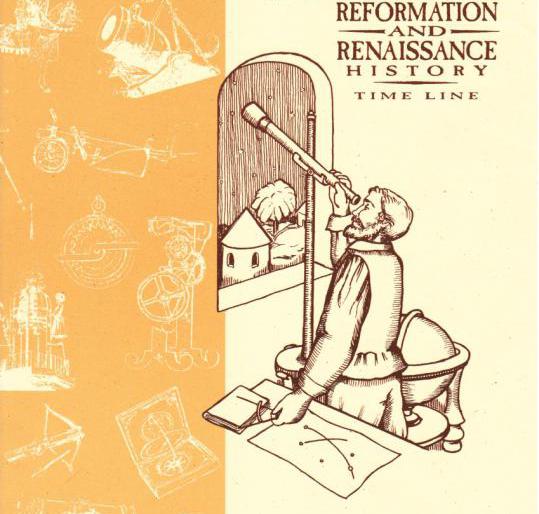
What does the arrow on the time line mean?
Since time never stops, that is, it runs or flows (as one prefers), it cannot be finished, it always continues ad infinitum (at least we do not know and cannot know this end). As in mathematics, the time line in history is a coordinate axis, where infinity is indicated by an arrow. But there is another difficulty that represents one of the stumbling blocks: how to initially count the years in history? The time line not only has no end, but also no beginning. And where to look for it? In the creation of the world, from the beginning of the reign of a monarch or the founding of a city, from the moment of the first written sources, holy books, or even from a cataclysm or other event that occurred? Or can you choose any conventional moment to start the countdown?

At what point does chronology begin?
In different eras, different peoples chose their own way of determining the beginning of chronology. European civilization chose the birth of Jesus Christ as its beginning. And although, according to this, the whole world in every corner knows what day, month and year it is, there are peoples who remember and keep a parallel countdown of time according to ancient national traditions.
It is known that there have been more than two hundred eras in the world that have nothing in common in their origin. The most famous of them are identified today by their name: for example, the Byzantine, Antiochian, Alexandrian eras.
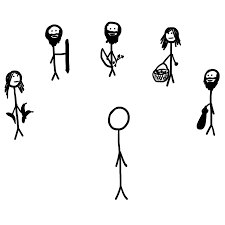
What is an era?
Any chronology is carried out from a reference point - an era (which means in Latin - the original number). Each people in ancient times created for themselves their own system of counting time, based on the most important and most memorable event for themselves. Such eras could last from several to a thousand years.
The Christian Church naturally considered the birth of Jesus Christ to be such a starting date, focusing on the fact that a new, qualitatively different period in the development of society and man had begun. This marked the beginning of European civilization. But no matter what system we are considering now, at this point of the beginning of chronology, it turns out that on the time line, here the line begins its countdown in its positive value. And it runs from zero to infinity along an arrow presented to us as a time line. Before our era, there were “dark times”, ancient era, the time of the pagans, ignorance and fear. And the line with an arrow leads away from the starting point of chronology in the opposite direction, counting from zero to infinity.
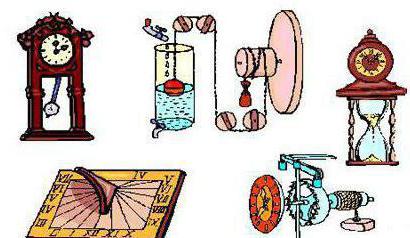
And what is “our era”?
A curious fact is that our chronology was introduced not from the beginning of our era, but much later. It is believed that the introduction of the era from the Nativity of Christ occurred only in 525, under the Pope of Rome by his monk Dionysius. It sounded like “from the Year of the Lord.” Today we speak more simply: our era. Some historians date the beginning of the process of calculating the date of Christ’s birth, as well as determining the day of Easter, to the 3rd century.
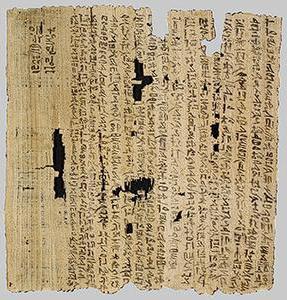
What is the time line in history?
Some may think this question is incorrect, because a line always remains a straight line. But, oddly enough, the theory of linearity of time is not the only one in the views of scientists. There are a number of time models. As the 20th century proved, space can be refracted, distorted, rounded, etc. The same can be said about time. A time line can become a circle, a spiral, a parabola, etc. For example, the well-known phrase that “everything in this world repeats itself” is confirmation that time moves in a circle (cyclic time). If we add the concept of “progress” to this circle, then the circular movement turns into a spiral, that is, movement in a circle with progressive progress. But there are also theories where there is no progress of history at all.
Philosophy of history
With development modern science the problem of time became a key issue in the philosophy of history, defining a number of concepts of history. Without going into details and details, it is worth noting that any worldview forms its own vision of the “time line”. This applies to both ancient mythological views, religious beliefs, and modern Christian and also many philosophical theories of our time that affect the understanding of time.
But at the same time, philosophical views alienate ordinary citizens from the everyday understanding of our lives. They are interesting and useful for scientists, but become a dangerous toy in the hands of a person seeking simple happiness. Such hobbies can provoke misinterpretation and use, and hence applications. Such theories must be studied thoroughly and thoughtfully. And for happiness it is enough to understand that the time line is straight and even.
LESSON. COUNTING THE YEARS IN HISTORY
The main objective of the lesson is to prepare students to understand the counting of years BC, without which it is impossible to study ancient history.
The idea is being formed that the most ancient calendars arose in connection with the needs of agriculture.
IN educational material there are no vivid descriptions of the lesson; information about the emergence of the Christian era (AD) is not related to facts familiar to students and is fragmentary; counting years BC looks like “reverse” and contradicts life experience children. All this requires the teacher to be especially careful and focused during the lesson.
Study plan: 1. The emergence of counting time by year. 2. The origin and essence of our chronology.
The introductory part of the lesson is devoted to how important it is, when studying history, to be able to name the year in which this or that event occurred. The teacher checks whether the students remember the dates in history primitive society(there are at least six of them in the textbook:
“When they appeared on Earth ancient people? When did people become like the people of our time? Etc.).
The teacher draws a “time line”: he draws a chalk line from one edge of the board to the other and an arrow indicating the direction of movement of time (see manual, Fig. 6).
Rice. 6. "Timeline"
“The closer to the classroom doors, the closer to our days,” he says, and puts the current year, 1977, on the “line.” - To the left or right of this date you need to postpone the date October revolution? Having marked 1917 on the “line”, the teacher asks: “How many years is the interval between two notches on the “line”?” (60 years old)
Another date is postponed (for example, the first mention of Moscow in the chronicle or the year of Napoleon’s invasion of Russia), after which work with the “line” is temporarily stopped.
1. B ancient times Primitive hunters and gatherers noticed that the warm season was replaced by cold weather, and then after many days it became warm again. People tried to determine the duration of each season, because they knew that the number of animals and fruits in the forests changed depending on the time. With the advent of agriculture, primitive people became even more interested in seasonal changes in nature, the duration of each season, the approximate length of the year. “Why do you think?” the teacher might ask.
Exercise: Come up with a fantasy story in which a certain tribe of farmers does not understand the seasons. Show what this can lead to. Few students with a developed imagination can complete the task. Here's an example of a student's answer:
“In one country lived a tribe of farmers. They did not know about the existence of seasons. In the fall, when there were a few days left before snow, they plowed and sowed the field. The seedlings froze. In the middle of winter, the snow melted - a thaw set in, the soil became moist. The farmers decided to sow the field. And so they did. But then it became cold again, and nothing grew.
In the spring they wanted to sow again, but decided that the cold would come again. We waited for the heat, sowed, but everything dried up. Many children in the tribe died of hunger..."
Questions: Why is this story fantastic? What knowledge did ancient farmers possess that would have prevented them from behaving like the characters in the story?
Ancient farmers celebrated the changing seasons with holidays.
“It’s September now,” says the teacher. - The nights are getting longer and the days are getting shorter. At the end of December, the days will begin to increase. It’s as if the sun will be born again: it will begin to provide more warmth and light. This natural phenomenon was noticed by ancient farmers. They celebrated the “birth” of the sun, wanting to speed up the onset of heat. What holiday do believers celebrate on these same winter days? Why did ancient farmers deify the sun, but hunter-gatherer tribes did not?
Another holiday is at the end of winter, when nature awakens after hibernation and seems to come to life. The ancient Slavs celebrated the coming of spring. At this time, the chickens began to lay eggs again, and the cows began to give milk. Therefore, in early spring, cottage cheese and eggs were favorite dishes and were served as a delicacy on the festive table. What spring holiday, when nature seems to be resurrected, is celebrated by believers in our time? ( Christian Christmas and Easter are the same ancient agricultural holidays; reinterpreted by the church in accordance with the myth of the birth and resurrection of Jesus Christ. See: Almazov S. X., Pitersky P. Ya. Irazdniki Orthodox Church. M., 1962)
The teacher emphasizes that the ancient farmers had an idea about the year: they understood that from one spring to another, from one harvest to another, approximately equal number days. They learned to count time by year: people began to remember in what year it happened an important event- foundation of the city, great flood, war.
Students, as a rule, do not know how our chronology arose, and do not even think about the fact that it is based on a certain starting point. Therefore, it is advisable to use the example of the ancient Egyptian and Roman eras to show that in any chronology such a reference point is required.
IN ancient Egypt (New historical and geographical concepts need to be highlighted (“Egypt is one of the most ancient countries in the world, which you will soon begin to study...” - the teacher will say, for example)) every time a new king began to rule, the count of years began anew. The first year of the king's reign was considered the first year, the second - the second, etc. When the king died, the first year began again, the second, the third. What is the inconvenience of counting years like this? Students understand that the lack of continuous counting led to confusion. The chronology invented by the Romans was different: they considered the year of foundation of the city of Rome to be the first, the next year to be the second, etc. Suppose a Roman said: “I was born in the year 700.” What did this mean? 700 years after what event was he born?
Questions: What was the count of years among the Egyptians in ancient times? Which one do the Romans have? Which count of years is more convenient? How?
2. “From what event do we count years? - the teacher asks a question. - Since what event has 1977 years passed? Students usually cannot give an answer. The teacher encourages them to realize that in our chronology there is a certain starting point. Anticipating a possible mistake, he suggests exercise: “Sometimes fifth-graders believe that we are counting from the time when the most ancient people lived on Earth. Refute this statement."
The teacher says that the counting of years that we use is associated with faith in a god named Christ. Tales about Christ were created about 2 thousand years ago. After several centuries, faith in Christ spread to different countries. And one of the believers ( The founder of the Christian era is considered to be the abbot of one of the monasteries in Rome, Dionysius the Small (VI century). In his time, churchmen used Diocletian's. era by which years were counted from the moment of capture imperial power in Rome by Diocletian. Since this emperor persecuted Christians, Dionysius decided to replace the Diocletian era with a Christian one. Based on gospel legends, he “established” the year of Christ’s birth) proposed to count the years from the birth of Christ. “Let the year of Christ’s birth be the first year,” he said, “the next year will be the second, etc.” This man “calculated” that Christ was born in 753 from the founding of Rome. This counting of years was gradually adopted in many countries ( But not all of them. Other chronology systems are used, for example, in Turkey, Iran, Afghanistan, India and Sri Lanka, Arab countries, Ethiopia, Nigeria and Sudan. See: Seleshnikov S.I. History of the calendar and chronology. M., 1970, p. 188-190, p. 212).
What happened from the point of view of believers 1977 years ago?
Christ was born, the students answer.
What actually happened this year?
It was the 753rd year from the founding of Rome, the teacher explains, nothing significant happened in this year, but in our chronology this year is considered to be the first.
For religious people, the birth of Christ, in whom they believed, is a very important event. But why do we still use this counting of years? Perhaps it would be more correct to count the years from the October Revolution? (What would be the current year in our country in this case?) According to the textbook, the teacher explains why we have preserved the traditional counting of years.
Questions: Which counting of years - ancient Egyptian or ancient Roman - resembles our counting? How?
The teacher goes on to say that “we call the time from the first year to the present day our era” (p. 31). The “time line” marks the beginning of our era. The fact that our era lasts a little less than two thousand years is fixed in the minds of students.
Most the hard part The explanation begins with the task: “Prove with facts that people lived before our era.” Students understand that dates related to life primitive people, should be noted on the “line” to the left of the beginning of our era.
“In ancient times there was a slave uprising led by Spartacus,” the teacher continues. - It began 74 BC. Where on the “line” should this date be placed?”
The called student determines the location of the date. The teacher introduces the class to its writing (74 BC) and suggests exercise: “Calculate how many years ago this uprising began?” After the answer, it is useful to explain how problems of this type should be solved.
Understanding what causes the “reverse” counting of years for events that occurred before our era (why, say, 74 BC is followed by the 73rd and not the 75th) is difficult. It is given not only to the weak, but and average students. The teacher must be prepared for the fact that some students may not learn the material in this lesson.
The explanation can be carried out as follows:
If an event happened one year BC, then we say that it happened in 1 BC. The teacher marks this date on the “time line” and continues: “If another event happened two years BC, then we will say: “This event happened in 2 BC” (an entry is made on the “line”). If the third event happened three years BC, we say that it happened in 3 BC” (a note is made).
Thus, it is important for students to understand that if an event occurs in such and such a year BC. uh., this means that it happened for the same number of years BC. uh. Time on the “line” is moving towards this year. Therefore, 3 BC. e. went 2 BC e. Etc.
The essence of counting years BC becomes clear only when performing various exercises. “Additional problems” are solved (p. 32).
The teacher helps the called students:
Read the conditions of the 1st task. What years are mentioned in it? (30 BC and 30 AD) Mark these years on the “time line.” What do you need to know in the problem?
Read the conditions of the 3rd problem. Mark on the “time line” the year in which the roadside pole was erected. Note the year in which the pillar was transported to the museum. Etc.
It should be explained: if you need to calculate how many years ago an event occurred, you need to count back from the mark on the “line” - “1977”. If you need to find out how many years BC it happened, then you must also count backwards, but from the mark “beginning of AD.” e."
Homework : textbook, pp. 30-32. Textbook objectives (p. 32). Compose one problem yourself, similar to the textbook problems.
Ancient world history
Online history textbook for 5th grade
Chapter 1. How people lived in ancient times
Did the world have an origin at the very beginning?
This is the riddle that God asked us,
The sages talked about her as they wished, -
No one could really solve it.
Persian poet Omar Khayyam
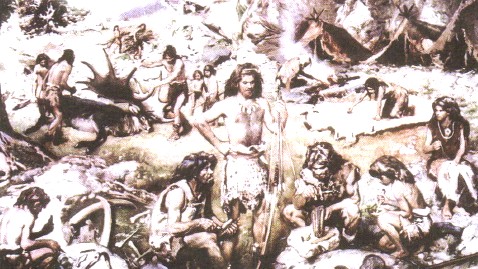
Tribal community. Modern drawing
Tell us about how we lived, what we dressed in and what our distant ancestors did.
§ 1. How to count years in history
How the modern countdown of time began. In ancient times there was no single calendar, but 2 thousand years ago an event occurred from which people began to keep their calendar. This event was the birth of Jesus Christ.

The religion he founded - Christianity - spread throughout the world. In countries where Christians were in the majority, the Nativity of Jesus began to be celebrated as a holiday. The old calendars were canceled here, and a new countdown began from the date of the birth of Christ. People began to call the time that has passed from the year of his birth to the present day our (new) era, abbreviated as N. e. Our era has lasted for more than 2 thousand years.

Counting the years to the new era. About something that happened before the birth of Jesus, we say that it happened before our (new) era, abbreviated as BC. e. How can you find out how many years have passed from an event that occurred before the Nativity of Christ to the present? To do this, you need to add the date that is now on the calendar to the date when it happened.
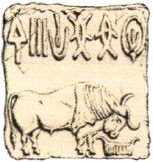
One of the first inscriptions in history made in Ancient India
For example, how can one find out how much time has passed since the emergence of writing, if it is known that it appeared in the 3rd millennium BC? e.? We must add 2 millennia to this date. It turns out that writing arose about 5 thousand years ago. Well, how do you find out in what millennium BC? e. did people learn to process iron, if we know that this happened approximately 3 thousand years ago? To do this, two thousand must be subtracted from three thousand years. It turns out that this happened in the 1st millennium BC. e.
Let's sum it up
Currently, in most countries of the world, years are counted from the birth of Jesus Christ.
“Time is an eternal image, moving from number to number.”
Ancient sage Plato
Questions and tasks
- When did the modern counting of years in history begin?
- What happened earlier and how much earlier: the appearance of writing or the beginning of iron processing?
- People learned farming 8 thousand years ago. In what century BC? e. it happened?

